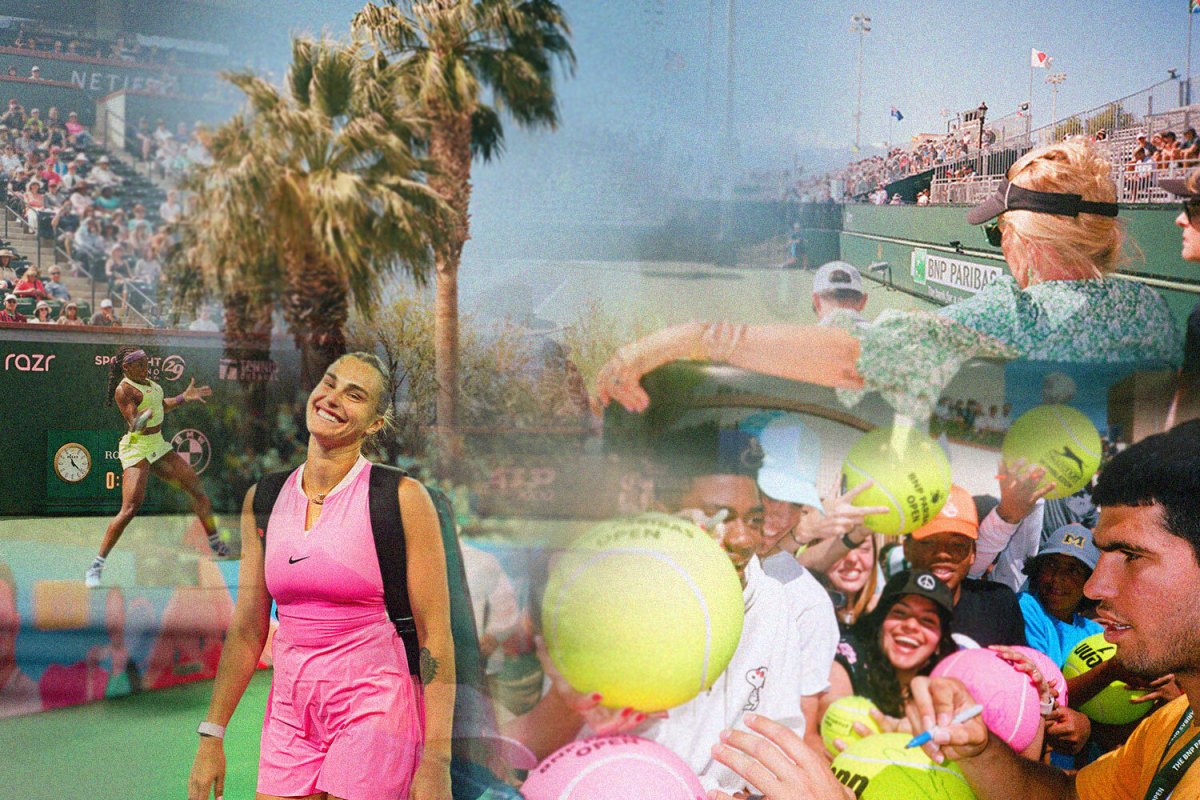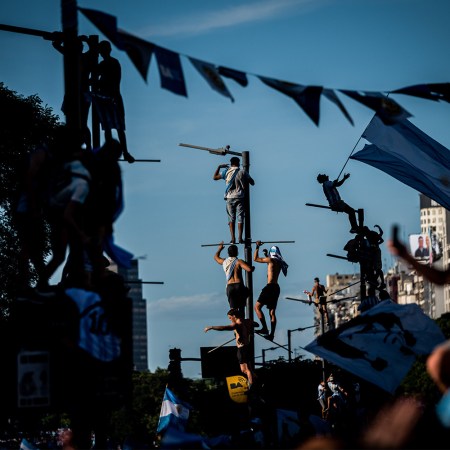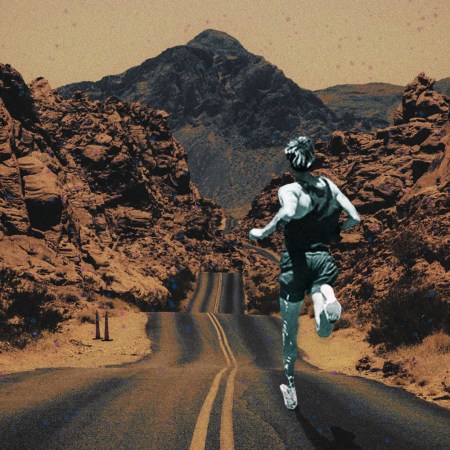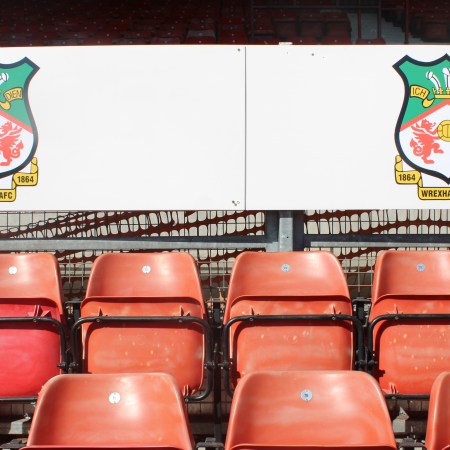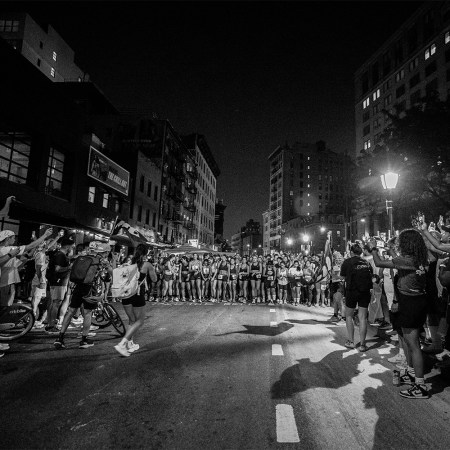I should be memorizing the names and nationalities of the top 30 players in women’s tennis, watching highlights from the latest ATP events in Acapulco and Dubai, or scouting storylines on r/tennis. I should somehow be preparing for my trip to Indian Wells for the first weekend of the BNP Paribas Open.
Instead I’m counting how many people in my section of Delta Flight 567 JFK → LAX are watching the Yellowstone prequel 1923. I can’t determine a clear figure without straining my neck or drawing attention to myself, so I stop, but it’s safe to say the show is staggeringly popular onboard. This doesn’t surprise me; I know the Yellowstone universe is a huge deal. But why do these facile frontier dramas resonate, and what might their ubiquity say about the state of culture and consumption? That I haven’t seen the show makes it hard to formulate an original thought. I sneak looks at my neighbors’ screens. I see horses, yellow skies, leather, guns, naked bodies. Conquest is an obvious theme. I think about the business-looking guy sitting next to me, so immersed in this world. Maybe he’s not as effective at work as he’d like to be. The woman up a row to my left, across the aisle, she probably wishes her husband, the older man gnawing on pretzels next to her, had a little more Harrison Ford in him.
Then something miraculous happens which is a voice in my head tells me to shut the fuck up. To stop appraising my fellow passengers’ in-flight entertainment choices in scoffing sociological terms. To stop building arguments against equally alive human beings. There’s relief in identifying that unconscious instinct to see myself as separate from — but I’m still wary of any misanthropy resurfacing and impeding the straightforward Californian contentment Indian Wells promises. I challenge myself to think about my recent episodes as an irrepressible little hater, to sink into their mucky moral subtexts and seize all insights necessary for spiritual growth, never mind how unflattering they may be.
I can hear my therapist warning me about the perils of self-critical thinking, that it won’t lead me to the peace or even clarity I seek. I try anyway. I suppose what I need to do is wrap my inner child in a bear hug and coax out of him the traumas and triggers driving this resentfulness. But when I land in Los Angeles and step into the sun’s white-light burn, I can’t help but glitch. Any interest in considering the psychic burden of being me completely melts away.
My mind empties as I drive out of L.A.’s ivory haze and onto the 10, destination Indian Wells. Zooming down the wide, hot freeway, through the black smoke of a double-decker freight train and past this eastward route’s many flamboyant billboards, all I’m thinking about is how cool it would be to watch Nelly do his thing at the Fantasy Springs Resort Casino in Indio, where one such billboard tells me he’ll be performing the following weekend. I’m wedged somewhere between the snow-capped San Bernardino Mountains to the north and the San Jacinto Mountains to the south when I stop registering the Coachella Valley’s human touches entirely. I start to notice the fields of purple and yellow wildflowers, and the sandy-shrubbed foothills, all washed in bronze light. I don’t have better words than “damn” and “wow” to describe what I’m seeing.
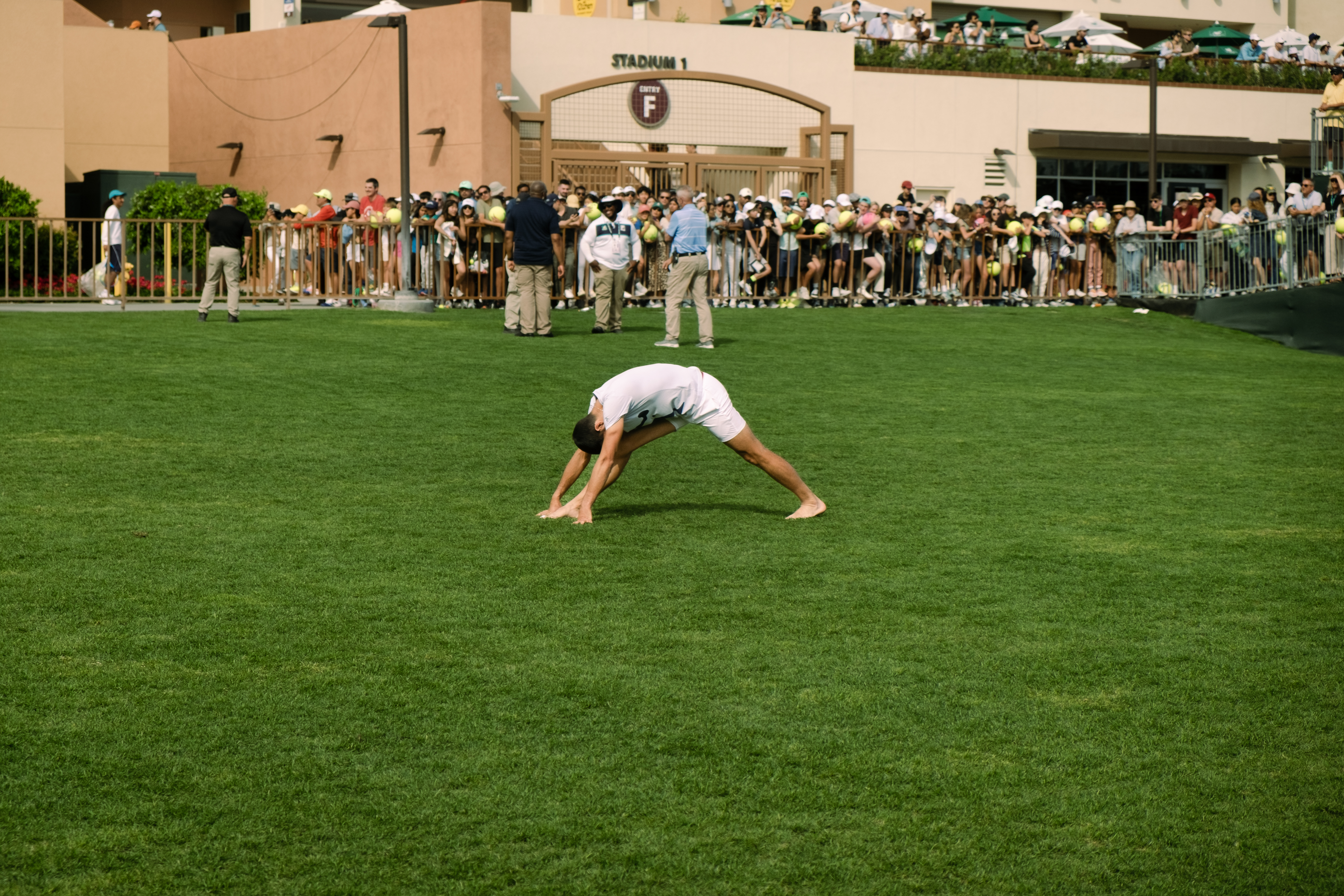
Awe blooms full as I arrive via the West Gate at the Indian Wells Tennis Garden, a 29-court tennis facility that, every March, hosts a premier hardcourt tournament on the ATP and WTA’s spring calendars (it also hosts gendered doubles competitions and, this year, a first-ever mixed doubles competition). On the Player Lawn — a rectangle of close-cut grass where competitors get warm, let loose and recover from workouts, shoeless on lounge chairs — Novak Djokovic and one-time world no. 3 Stefanos Tsitsipas play pick-up soccer. Former U.S. and French Open finalist Casper Ruud jogs behind them, dwarfed by the horizon’s Santa Rosa Mountains. Cameron Norrie, the no. 1 Brit on the ATP Tour, does tricep pulls on rubber bands held by a trainer, his movements alternately nonchalant and supremely focused. In a nearby rubber-floored fitness area, Caroline Wozniacki, who once spent 71 weeks atop the women’s game, stretches alongside her husband, the retired NBA All-Star power forward David Lee. Grunts and squeaks can be heard from adjacent practice courts. A dry breeze flows through it all.
Overlooking the lawn, fans press tight against security gates. They wave their $30 oversized tennis balls and clamor for autographs; it’s mostly children behind these mad calls, but some do come from unaccompanied adults, whom the players oblige watchfully. Ushers and private security officers make sure no one gets too handsy. Armed muscle from the Riverside County Sheriff’s Department looms in the distance, near the walled-off dining patio that players frequently disappear into.
Here, the athletes, who are numerous at this early stage of the tournament, sit hunched over high-tops, or sunken into vast sofas, and eat from plates spilling over with fish, avocados, rice, kale. Most are tall, tanned, veiny and smooth socializers, trading light banter in English coated with appealing European intonations. A few rock only with their various attachés — coaches, life partners, best-friends-turned-managers — and discuss what I assume are either matters of confidential strategy or tedious logistics in their native languages (Dutch, French, Czech, Spanish, Italian, Russian). In all interactions, the players embody an ease of manner that comes with the simple fortune of living a pretty amazing life (true of the sport’s top rank, at least) — but that also attests to Indian Wells’ enduring popularity among pros. For nine straight years, players from both the ATP (the men’s tour) and the WTA (the women’s) have voted the BNP Open their favorite tournament of their tours’ respective 1000-level events. Hosted by such legitimate and celebrated cities as Madrid, Rome, Paris, Toronto and Miami, 1000-level events are tennis’s most prestigious competitions outside of Grand Slams.
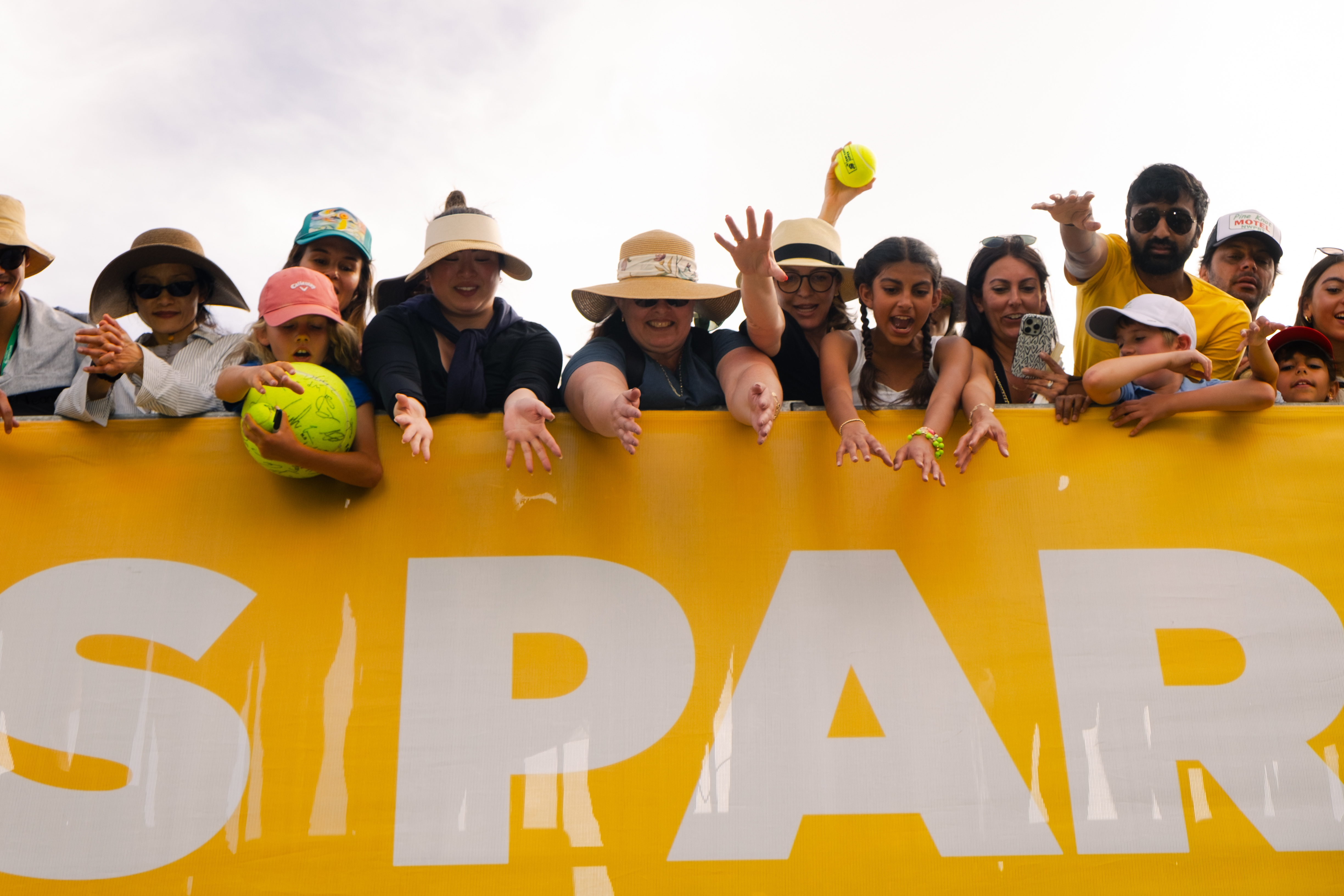
Indian Wells wasn’t always considered, as it is now, “the fifth major.” In its earliest days, some ATP higher-ups weren’t even convinced the Coachella Valley was a large-enough market for professional tennis. From the late 1970s through the early 2000s, growing crowds and the sport’s top players — Jimmy Connors, Pete Sampras, Martina Navratilova and Steffi Graf all won more than once — defied those doomsayers by flocking annually to the scenic desert showcase. But it was largely a regional affair, and it lacked firm roots. Over that same three-decade period, the tournament cycled through naming-rights sponsors like American Airlines, Grand Marnier, Pilot Pen, Newsweek and Pacific Life Insurance (BNP wouldn’t become the title sponsor until 2009); and changed settings frequently, from the Tucson Racquet Club (1974-1975), to the Mission Hills Country Club in Rancho Mirage (1976-1980), to the La Quinta Hotel (1981-1986), to Indian Wells’ Grand Champions Hotel (1987-1999). Only in 2000, when play transferred to the 54-acre Tennis Garden, did the peripatetic tournament appear to finally find its forever home.
But a shiny new tennis palace couldn’t insulate Indian Wells from the trouble the early aughts would bring. In 2001, its reputation as a player-friendly atmosphere collapsed when a 19-year-old Serena Williams, her father, Richard, and her 20-year-old sister, Venus, reported that racial slurs had been directed at Richard and Venus as they walked to their seats to watch Serena play in the women’s singles final, a match she won in three sets against the blonde Belgian Kim Clijsters. The crowd was still outraged by an incident two days prior when Venus, citing knee tendonitis, withdrew four minutes before the scheduled start of her semifinal matchup against Serena — a decision announced with fans already in their seats, and one that fueled rumors of intrafamily match-fixing. In her 2009 autobiography My Life: Queen of the Court, Serena described the championship day scene as “a sea of rich people — mostly older, mostly white — standing and booing lustily, like some kind of genteel lynch mob.” This episode prompted the Williams sisters to boycott Indian Wells for 13 of their prime playing years, during which time they combined to win 20 Grand Slams.
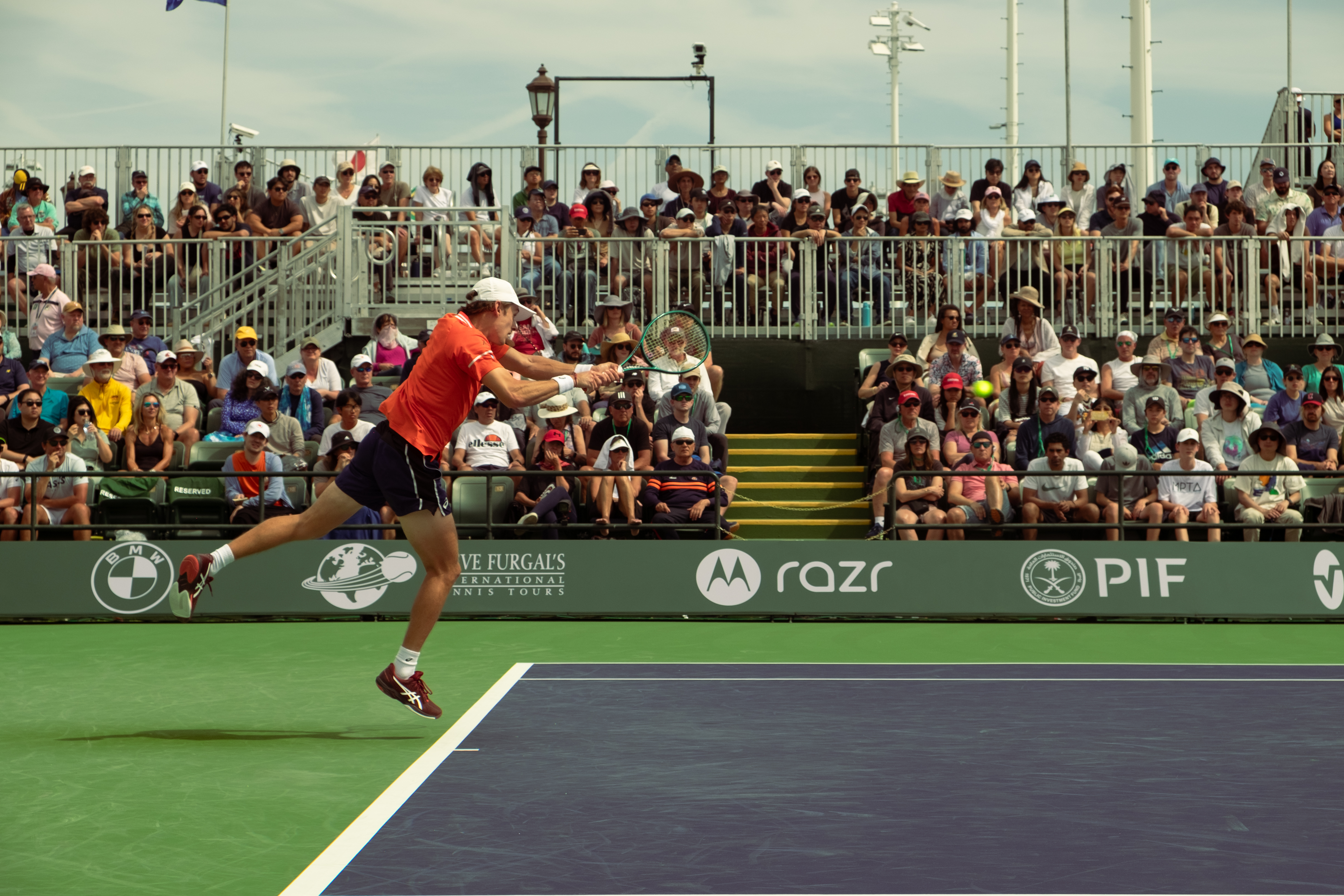
At the same time, as The Desert Sun has diligently reported before, the tournament was experiencing severe financial problems. By 2006, Indian Wells’ ownership — a partnership between IMG and PM Sports Management, headed by longtime IW administrators Charlie Pasarell and Raymond Moore — had taken losses on the previous four years’ events and was still strapped with eight-figure debt from the $77 million construction of the Tennis Garden. Accordingly, they received various offers to buy the tournament’s ATP sanction. The most serious offers, which IMG supported, came from groups in Shanghai and Qatar, who both would have moved the competition overseas. But Pasarell and Moore, former journeyman professionals involved in tournament operations since the ’80s, wanted to keep it in California. So they recruited a coalition of American tennis benefactors, which counted Billie Jean King and Pete Sampras among its members, to purchase IMG’s 50% ownership stake. “I just believed it would be a shame to lose this tournament,” Sampras told the Los Angeles Times when the deal was announced. “It is right there behind the U.S. Open as the best tennis event in the country.”
Indian Wells spent the next few years incrementally stabilizing, exactly what you’d hope for from a shell-shocked survivor of a near-death experience. Then, in December 2009, billionaire Oracle co-founder Larry Ellison bought the tournament and the Tennis Garden for $100 million. In the following years, Ellison poured millions more into structural and aesthetic improvements that guaranteed Indian Wells wouldn’t just walk again, it would dance. The redesign involved renovating the plainly named “Stadium 1,” a green-accented open-air octagon that holds 16,100 seats and is the second-largest outdoor tennis stadium in the world; constructing a second show court, “Stadium 2,” whose capacity is 8,000 and which contains a full-menu Nobu in its upper deck (with seats that overlook the action); implementing Hawk-Eye, a cutting-edge line-calling technology; and rehabilitating the grounds, with an emphasis on new and more flower beds, flower walls, palm trees and other desert dreamscape miscellanea.
But Indian Wells could only be so modern, so relevant, without the participation of the biggest names in the women’s game. In 2015, Ellison got on the phone with Serena and promised to “do everything to make you comfortable and welcome in Indian Wells” — a message sincere and concrete enough to persuade Serena to end her family’s boycott. Serena reached the semifinals that year. Venus returned for the 2016 tournament, which nearly 440,000 people visited over its two weeks. When Ellison took over in 2009, Indian Wells could expect to welcome 300,000 fans. In 2024, attendance exceeded a record 493,000.
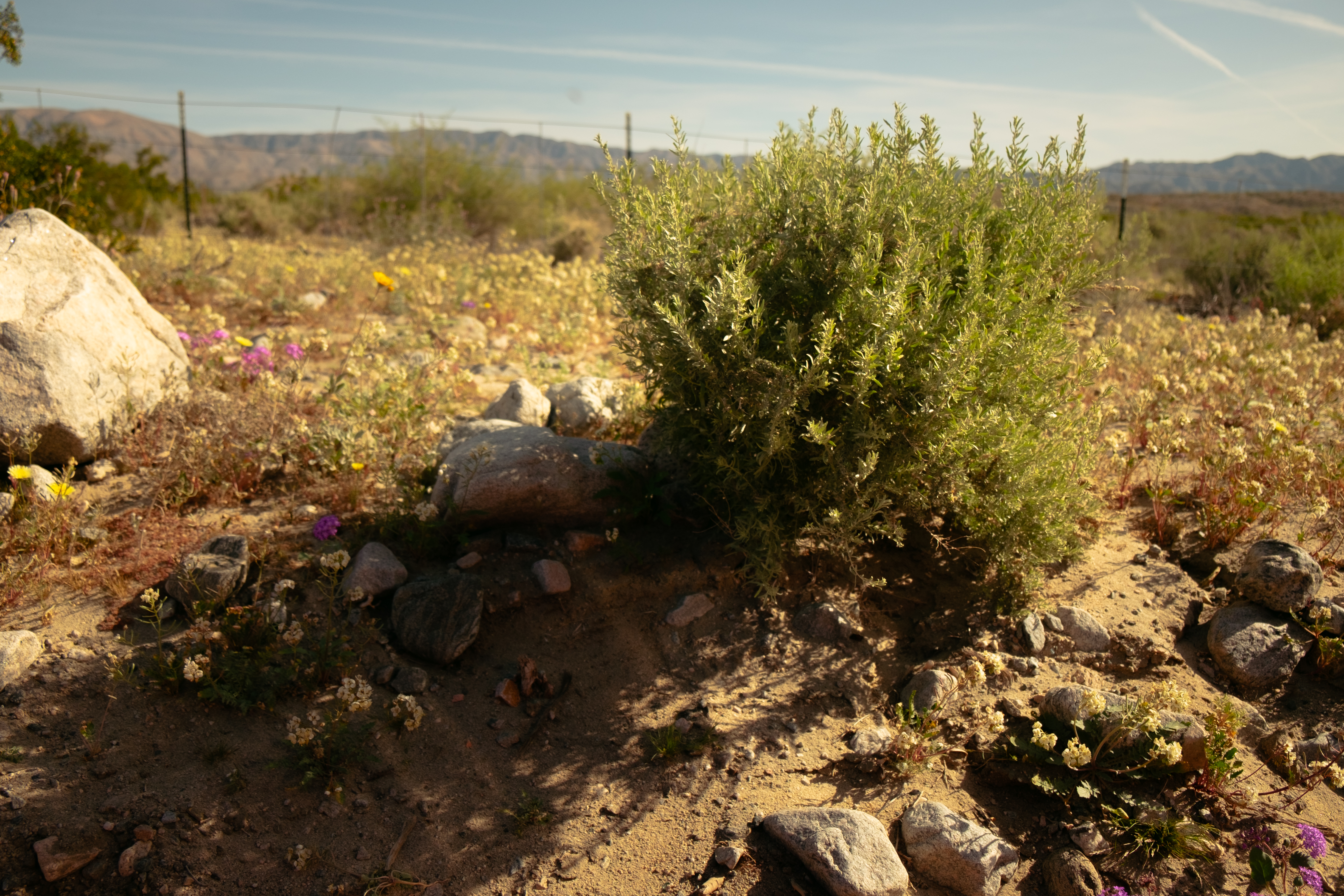
Indian Wells calls itself “Tennis Paradise.” The sunniest security guards tell fans to enjoy the day in Tennis Paradise. The default image of the facility’s many multimedia screens blasts thick white font against a peach background and reads WELCOME TO TENNIS PARADISE. After Jannik Sinner’s second-round beatdown of the brooding Greek-Aussie Thanasi Kokkinakis, an on-court interviewer asks the world’s third-ranked player how he’s enjoying life in Tennis Paradise; the interviewer uses the phrase three times in a conversation that doesn’t exceed three minutes. At the press conference that follows Novak Djokovic’s unexpectedly hard-fought second-round win over the 69th-ranked Australian Aleksandar Vukic, a video team takes him aside, gets him lit and asks him why Indian Wells is Tennis Paradise. He stumbles a bit when he realizes they’re after specifics — then says something about the pleasant weather, the landscape’s pretty colors.
The rainbow sherbet spectrum of a day in Tennis Paradise is completely surreal — and a conspicuous motif of the tournament’s official branding. Visitor maps, merchandise, concessions tents, concessions packaging, welcome banners: anything with a paintable surface is decorated in highly saturated hues of purple, pink, blue, green, orange. Most players’ clothes complement this visual theme. Men’s singles winner Carlos Alcaraz plays his six matches in sky-blue shorts, sky-blue wristbands and a fuchsia shirt made mildly psychedelic by waves of vertical blue lines. Coco Gauff wears a plum headband and a chartreuse tank top and skirt. Aryna Sabalenka smacks 80 mile-per-hour forehands in an orchid polyester dress. Djokovic’s monochrome scheme darkens as you go down his body, from a lime Lacoste polo to forest-green Asics. Even a studiously noncompliant player like Taylor Fritz — looking like a damn piano key in his white and black Hugo Boss getup — finds his coral Head Radical racquet in vogue.
Music is another key stimulus to Indian Wells’ relentless transmission of good vibes. During changeovers, arena speakers blast censored, upbeat chart-toppers that cross decades and genres. Pharrell might follow a Beach Boys hit from Brian Wilson’s most manic years, which might follow that TikTok song that’s like “You my lil’ boo thang / So I don’t give a hoot what your dude say.” And since the main courts are so densely zoned, it’s not uncommon to hear an ABBA ballad echoing from Stadium 2 while the players under your eye in Stadium 1 are locked in a tense, hushed point. If you’re having a drink at the Corona Premier tent, or the Dobel Tequila tent, or ensconced in a miniature “cabana” on the lawn surrounding the Circle of Palms Champagne Bar, you might hear amateur guitarist-vocalist John McEnroe on the Village Stage screaming an R.E.M. cover. (You might also hear him preface his rendition of “It’s the End of the World…” with a vague warning about what horrors await this country if we don’t “get our act together” come November.) The purpose of these sounds is mostly to dial up the energy, but not always: In the 25,000-square-foot retail tent, a commercial space of Black Friday abundance and density, a DJ with a treble clef tattooed under his left ear plays Dua Lipa remixes he says were chosen for their subliminally calming effects.
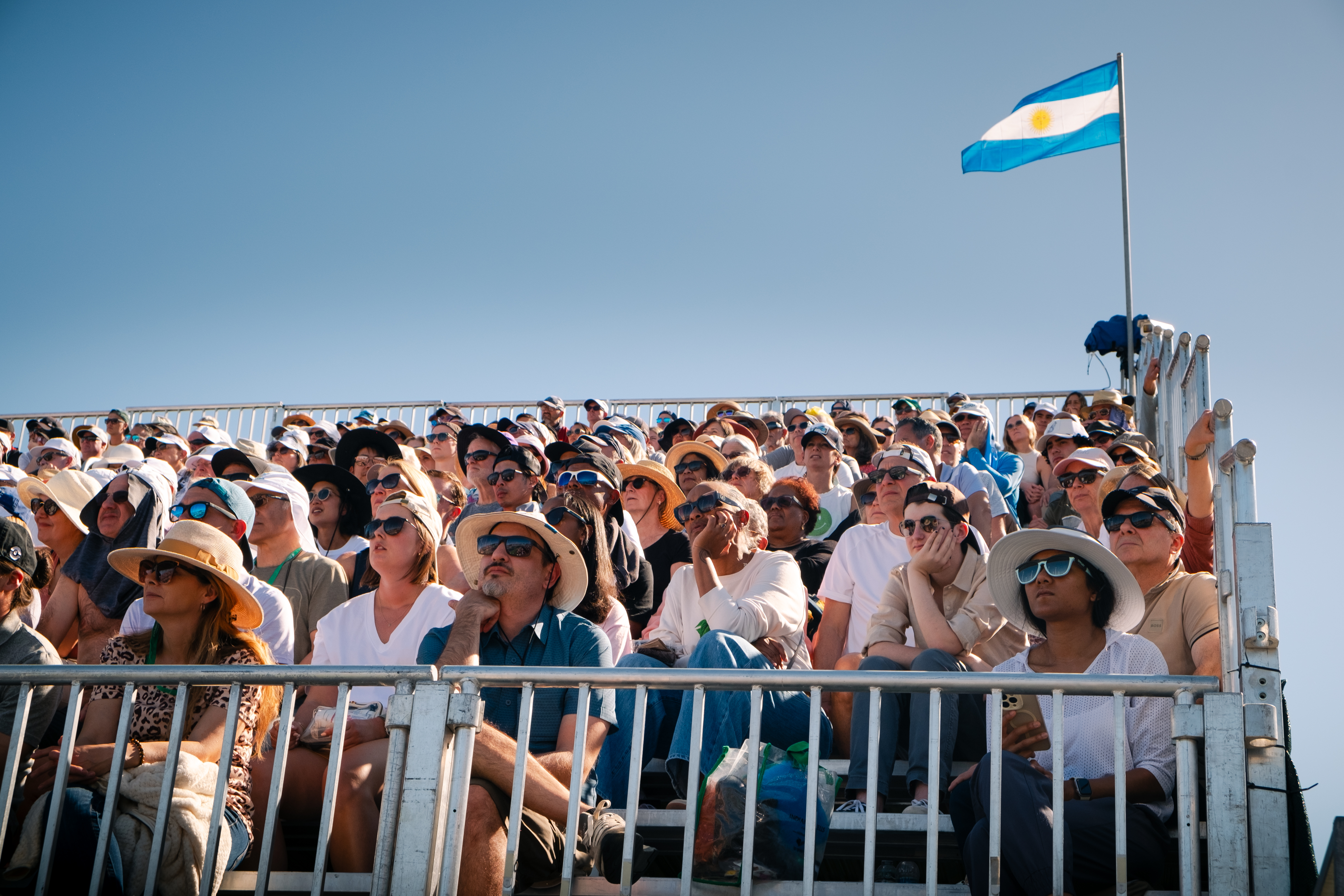
Some of the tournament’s corporate sponsors enhance Indian Wells’ palm-tree daydream. Penn provides the official game balls, which appear specially designed to glint in the lemony daylight. The Rolex clocks that keep time during matches refine the courtside aesthetic, while camouflaging amongst the paneled screens that flank the baseline. Other brands don’t integrate as naturally. BMW’s eight machines on display — among them a 550-horsepower track car that costs $230,000 and is not street-legal — impede the flow of foot traffic along the looping paths that link the three showcase courts. In one of the many tents situated along those paths, Veroni — “authentic Italian charcuterie since 1925” — shows off an arsenal of pink meats best kept under curved glass in a New Jersey deli.
[Investors] poured millions more into structural and aesthetic improvements that guaranteed Indian Wells wouldn’t just walk again, it would dance.
My favorite sponsor is the Spotlight 29 Casino in Coachella. Spotlight is there to tease the forthcoming addition to their casino of a 300-room, Bellagio-style hotel, with a “Chicago-inspired” steakhouse and adjoining cigar lounge on the penthouse floor. The two shrewd women who manage the tent are assisted by a handful of guy’s guys who flood visitors with invitations: play a hand of blackjack; enter a raffle to win a 2024 Harley-Davidson Breakout ($22,500); take a pic with a silly filter on our iPad; sample the beers we brew back onsite at the casino. I normally take a dry pleasure in being uncooperative with dogged salespeople, but something about the man-to-man earnestness of these offers moves me to say yes to most. I like stepping outside my usual restrained self and chopping it up with the Spotlight reps (“This bike is siiiick” / “I don’t drink but if I did I’d be getting after it…!”). As I walk out of their tent and into other conversations — with a tech founder wearing a bucket hat signed by Andy Murray; with a cartoonishly hostile bachelor party — I’m a little bolder, more open, more connected.
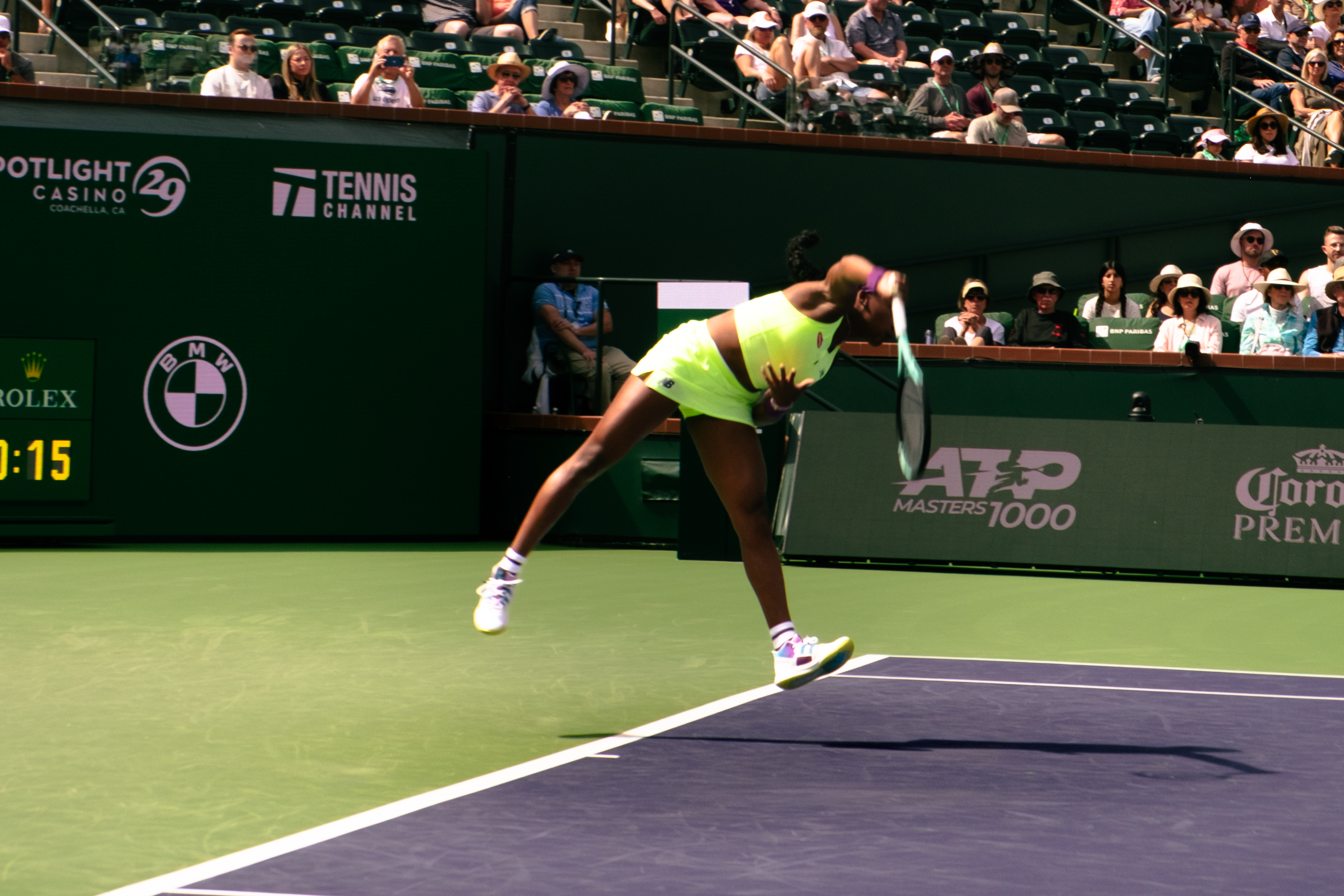
I find a higher dose of that feeling on Saturday afternoon in Stadium 1, where the reigning U.S. Open champion Coco Gauff plays 45th-ranked Frenchwoman Clara Burel in the second round of the women’s singles competition. Coming off an upset of fifth-ranked Jessica Pegula in the second round of this year’s Australian Open, Burrel is more dangerous than her ranking suggests. In the first set, which she wins 6-2, she plays like a patient predator from the baseline, targeting Coco’s sometimes wild forehand and pouncing on shallow returns that Burel either backhand-blasts up the line, or sends cross-court, at un-gettable angles, with her slingshot forehand. In set two, Coco moves more freely than she did in her sluggish first act, sprinting and sliding across the Plexipave court to neutralize Burel’s precise shot-making; her defense leaves scuff marks on the purple surface and evens the match at one set all. After a shaky start, the world’s third-best women’s tennis player only needs to win six more games to advance.
But 24 minutes later, Coco goes down 4-0 after Burel slaps a volley past her, a point that results from Coco’s putting too much air under a drop shot struck from the baseline. In my head I’m like, okay Coco, what the hell is good here. But my peers are more sanguine. They never so much as groan at the major disappointment unfolding. One fan in the upper level yells, “IT’S OKAY COCO ONE POINT AT A TIME.” Other spectators whoop and clap in agreement with this truism, and as the match progresses, it appears Coco has internalized its wisdom. In the fifth game, she calmly returns Burel’s serves and focuses on simply keeping the ball in play. Burel commits three unforced errors, and Coco gets on the scoreboard at 4-1. As she walks to her chair during the changeover, disjointed but resonant cheers of “LET’S GO COCO” ring out. Then Kate Bush comes out of nowhere: “And if I only could / I’d make a deal with God / And I’d get him to swap our places / Be runnin’ up that road / Be runnin’ up that hill…”
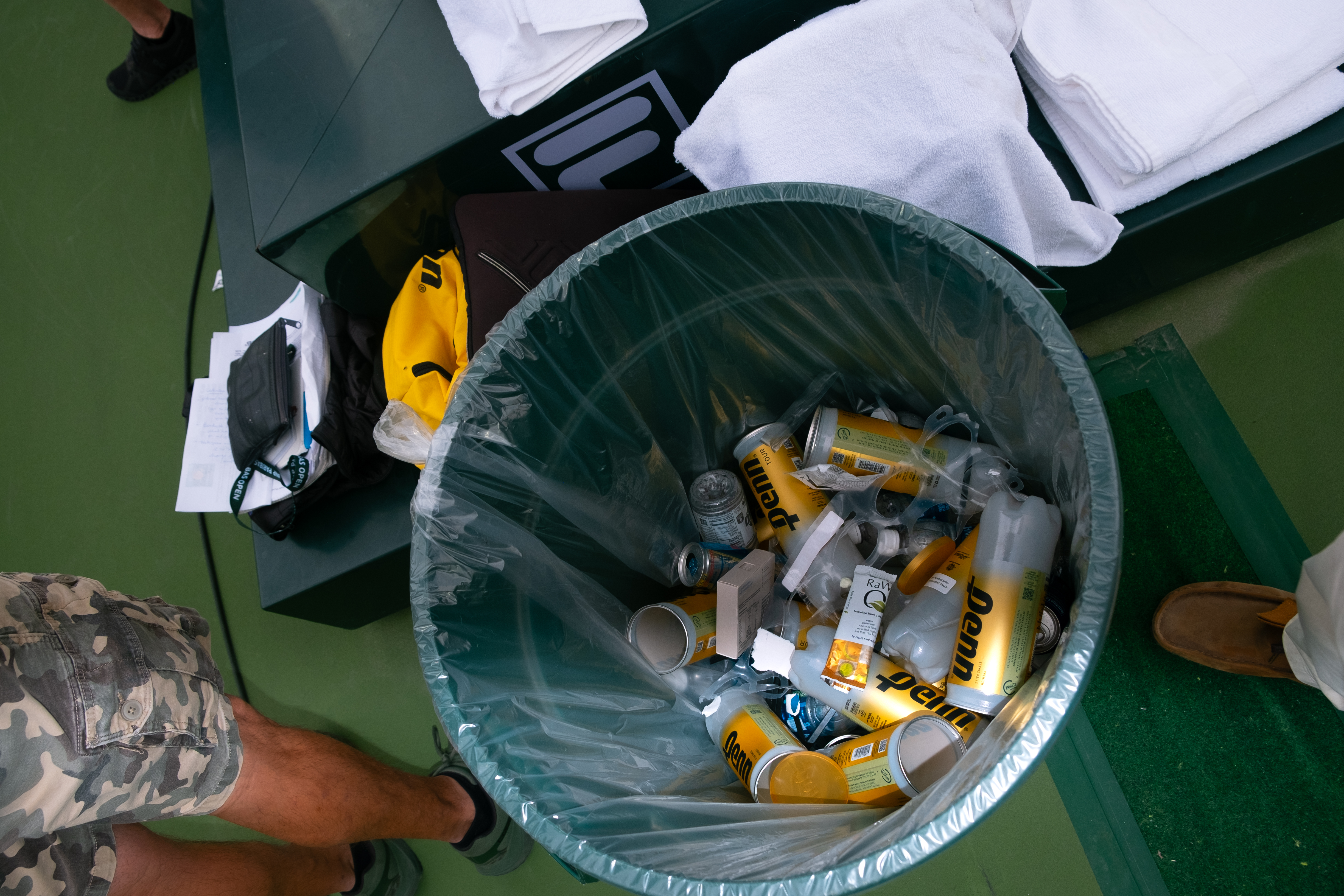
Coco rides this momentum shift through the 12th game’s final rally, when Burel’s shanked backhand launches the match into a deciding tiebreak. This pressure brings out the best in Coco, and specifically her forehand, which confidently withstands Burel’s continuous challenges. It also emboldens the fans, who receive a warning from the umpire to “PLEASE be quiet, PLEASE, ladies and gentlemen” after Coco strikes an untamable backhand and goes up six points to two. I’m among this unruly lot. This comeback has loosened me, decluttered me, like my life force — a concept I rarely ever think about but when I do it’s as an inner phenomenon — can now express itself outwardly: in smiles (giddy, unselfconscious, the kind I used to swallow as a kid), claps (until my palms are pink) and outback-inspired chants (“LET’S GORR CORR CORR”).
A few points later, Coco survives a 23-shot rally to win the match. The thousands gathered roar like thunder, both complimenting her fortitude and requesting she acknowledge a crucial source of it. When Coco does smile and wave at us, when she takes a moment in her post-match interview to thank her faithful for our energy and support, I’m struck by a surge of gratitude: for her sincerity and resolve; for that fan who was probably in his head like If no one’s gonna say it, I will before shouting “IT’S OKAY COCO ONE POINT AT A TIME”; and for my own fortune in witnessing a 19-year-old tennis player’s soul-expanding achievement.
The thousands gathered roar like thunder, both complimenting [Coco’s] fortitude and requesting she acknowledge a crucial source of it.
Indian Wells is a reliable supplier of rich emotion, which is convenient for fans like me whose need for more is constant and insatiable. On Saturday night, under a gleaming black sky, I watch two-time Grand Slam-winner Aryna Sabalenka save four match points (and squander three of her own) to escape with a win over the uncelebrated American Peyton Stearns, who proves her mettle by winning the first set in a tiebreak and losing the third set’s tiebreak by an admirably thin margin (8-6). As she walks off the court (after reportedly telling Sabalenka that she almost had her), Stearns earns resounding cheers from the crowd. Although I was rooting for Sabalenka — she’s got this all-or-nothing racquet-smashing style I respect — I surprise myself by showing Stearns some love, suddenly sentimental about her fearlessness against a giant of the women’s game.
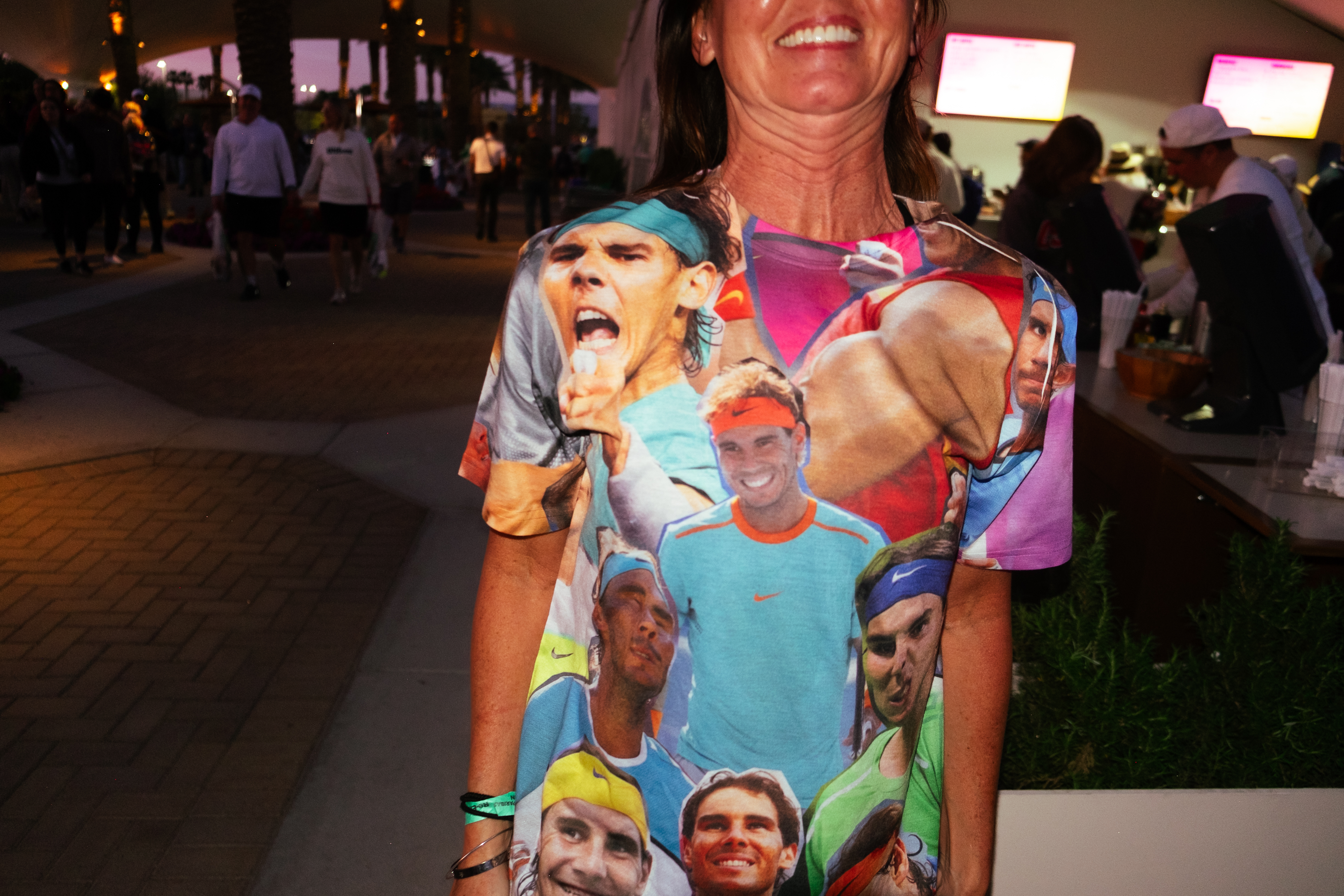
The next afternoon, I exercise the awesome power of my media credentials and find a seat in a low row of a 100-level section for Carlos Alcaraz’s third-round match against Felix Auger Aliassime. It’s hard to be impartial — at this point, I’ve internalized that “official tournament press” should remain impartial — when you’re that close to Alcaraz as he carves low-arcing drop shots from the baseline, or serves perfect diagonals that bounce wide over the alleys. The duality of Alcaraz as wily torero and stubborn bull becomes evident at deuce in the second set’s fifth game, when he punches two consecutive forehands up the line (each around 90 miles per hour by my estimate), floats to the net to intercept a lazy lob and ends the point by gently pushing an overhead volley cross-court. I throw a fist in the air and spontaneously call out “VAMOS!” But he doesn’t acknowledge or even appear to hear what I fear is a breach of protocol. At the next opportunity, I escape to the 300s. From this far-off vantage, Alcaraz is less a Babolat-wielding deity than an extremely functional mechanism of the court. His movements — shuffle, swing / shuffle, swing / sprint, split-step, smash — start to look predetermined, but that doesn’t remove any wonder from the witnessing. It just directs my wonder away from the individual and toward the sport that elicits and stages his talent.
Alcaraz coasts to a 6-2, 6-3 win. I walk out of Stadium 1 hungry as hell. I go over to the aforementioned walled-off dining patio, where I’ve been eating all weekend. An officious security woman blocks me from entering. I point to my ID badge like I’m a federal agent. She doesn’t flinch. With obvious pleasure, she explains that my credentials are no good here, that the space is reserved for players and key personnel only. No media.
“Is this your first day at the tournament?” As if that might explain my brazenness.
“Third,” I say.
A serpentine coach with a Head racquet bag over his shoulder walks past me, a wince in his smile.
“Then surely you’ve been turned away before,” she says.
I explain I’ve eaten here like four times.
“Well, someone clearly made a mistake.”
“Clearly,” I say.
“Anything else I can do for you?” she asks with a deep sigh.
I think I see Taylor Fritz heading our way. Taylor Fritz can’t see me like this. I turn and go.
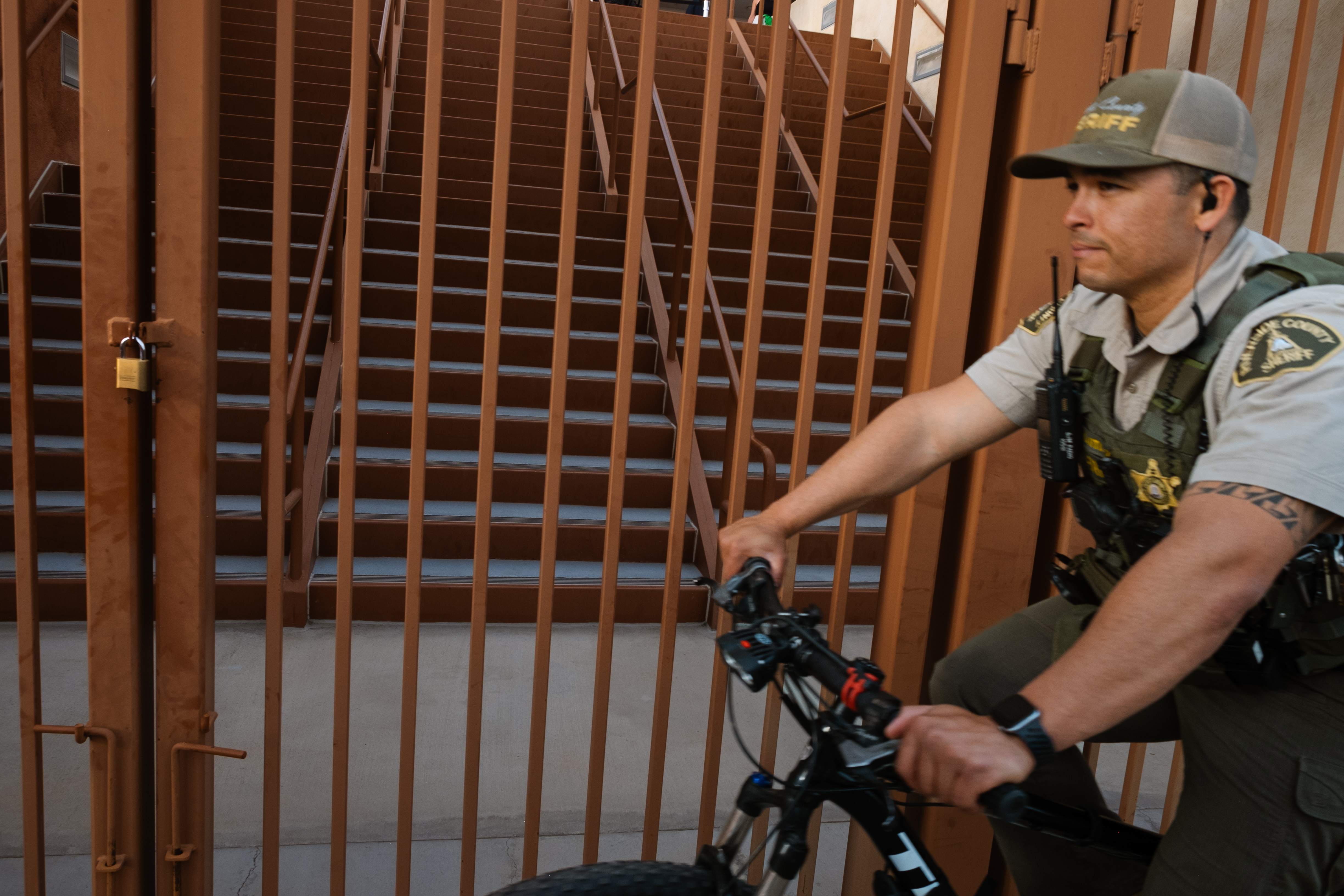
I’ve lost my appetite, but I still have some time to kill before Jannik Sinner’s third-round match against Jan-Lennard Struff, my last match of the weekend. I walk over to the practice courts, where the fans are pious types, reverent enough to be enthralled by rote, drama-less drilling. I want to understand what they get out of this. “Excuse me, I’m writing a piece about—” They throw up silencing fingers, then point to two players I can’t identify who trade leisurely backhand slice shots. I know I shouldn’t have any sort of attitude about this, that people who traveled to watch tennis have every right to hush a guy who interrupts their watching tennis. But still I’m in my head like: what’s everyone’s fuckin’ deal.
My hunger returns. I buy a $24 pizza from a vendor that calls its pies Filipino-inspired but whose most exotic ingredient on offer is a black olive. I ask a young woman alone at a picnic table outside Court 3 if I can eat there with her. She’s wearing a Dodgers hat and a shirt with Tyler, the Creator’s face on it and is so engrossed in her phone she can only gesture ambiguously with her eyebrows. “Take that as a yes,” I say, before coughing over it. I sit and open the box and it’s two modest Detroit-style squares. A shaggy blond man with mountainous shoulders materializes and sets down two boxes of the same pizza. He flashes me a primal look that I interpret to mean: this is my woman. She opens the boxes and says, “This looks fire.” Before I say anything about how you might expect a more substantial portion for the price, I look at the big screen outside Stadium 1 and learn that Jannik’s match has begun. I dominate my slices in seven bites and run over.
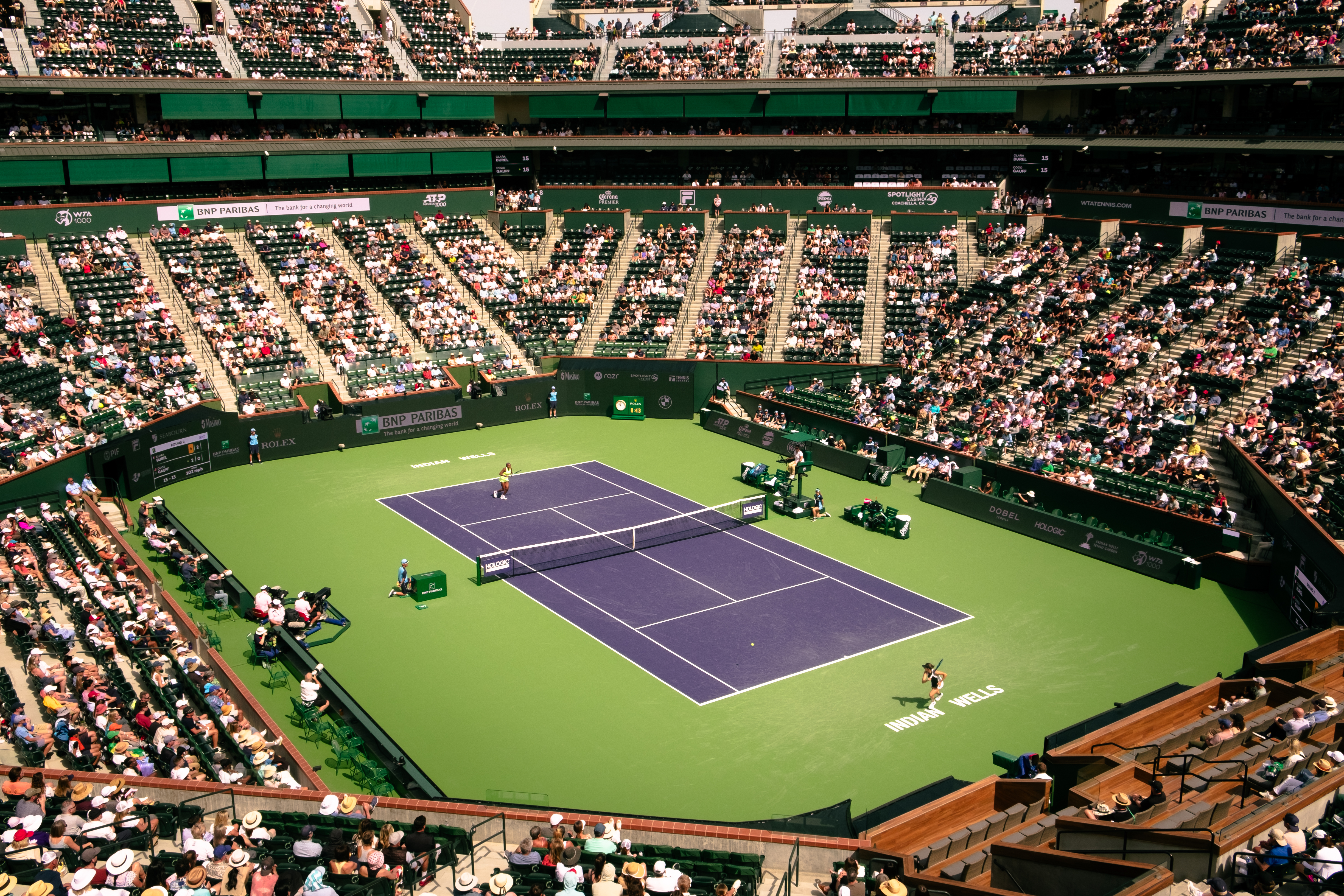
Confident I can play it cool, I find an empty chair in a 100-level section centered with the net and watch as Sinner calmly dictates the pace of play. With his spidery arms, he whips a forehand cross-court, a backhand cross-court, then charges to the net and cuts a drop volley that dies as soon as it touches the hot ground. Later, he anticipates the cross-court direction of Struff’s running half-volley and chips back a passing shot that narrowly eludes his 6′ 4″ opponent’s reach. “Can you believe that?” a woman in front of me asks her husband after the point. (He fell asleep earlier, and she’s been nudging him every few minutes.) I can’t fathom it. Sinner, meanwhile, never looks surprised by the magic he creates.
Sinner breaks Struff’s serve to go up 3-2 in the second and final set. He’s cruising to his 14th straight win of 2024. During the changeover, he sits in a stiff green chair and wipes sweat from his forehead. A ball kid stumbles over with an umbrella. The job should be easy: shield Jannik Sinner from the sun. But she struggles, first with a courtside cameraman’s trail of AV wires, then with the sun itself. She can’t seem to cast shade over Sinner’s entire body. She stands in front of him, she shuffles right, a little left, right again, up a step. She switches hands: right on the handle, left on the runner. She puts her feet together, extends her arms straight.
There, like that. She finally has him. She’s turned away from me, so I can’t see her face. I like to think she’s bulged her eyes in mock embarrassment, or flashed Jannik a knowing smile, or somehow communicated she’s at peace with herself.
The players return to their baselines to resume the match. Sinner jumps in place three times and bounces the ball eight or nine. I’m still thinking about the ball girl. I don’t want her to get any shit from a micromanaging handler about how she danced around too much, stood too close to Jannik. About how in training they stressed the importance of being intuitive and graceful and invisible in all movements. I want to scream out and tell her she’s doing an amazing job, that they’re all doing an amazing job, these expressionless teens with good hands and fast feet, and if anyone finds fault with their adolescent clumsiness, if anyone is so narrowly alive that they fail to see how this clumsiness might humanize the uncanny pageantry of Tennis Paradise—
A gunshot pop explodes my thoughts. Sinner’s first serve lands a few inches long. My brain melts once more.
The Charge will help you move better, think clearer and stay in the game longer. Subscribe to our wellness newsletter today.
